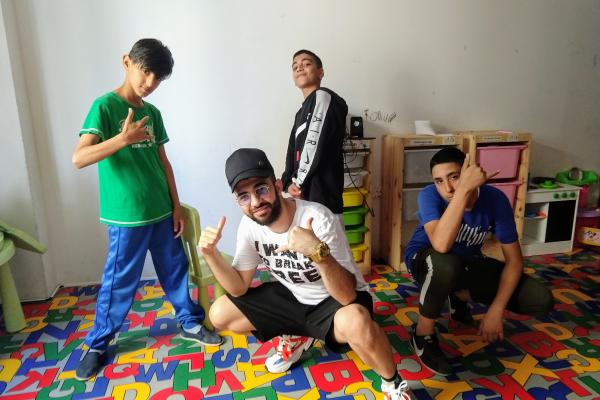Making Space for Refugees: Regimes of Mobility and Immobility in Turkey

By Lecturer Danielle V. Schoon, Department of Near Eastern Languages and Cultures

In 2016, the European Union and Turkey implemented an agreement to regulate ‘irregular migration’ from the Middle East to Europe. According to the agreement, EU countries will invest in improving the conditions of Syrian refugees by sending aid to Turkey and, for every irregular migrant returned to Turkey, one legal Syrian refugee already in Turkey will be resettled in the EU. German Chancellor Angela Merkel maintains that the migrant deal is essential for protecting Europe’s external borders and stemming the tide of the refugee crisis. Yet, it has been widely criticized for undermining the EU's commitment to human rights and one of its key principles, the free movement of people. After Turkey declared a state of emergency following the July 2016 coup attempt, the deal also became increasingly distasteful to EU countries that condemn the Turkish government for authoritarian tactics against its own citizens. Nevertheless, the deal remains in place and Turkey now hosts the world’s largest community of displaced Syrians – over 3 million people. Although not officially designated 'refugees' in Turkey, under the status of temporary protection they have the right to housing, education, and healthcare.
While considerable attention has been paid to the international agreements and geopolitics that have shaped Turkey’s role in the refugee situation, this study turns the focus to Turkey’s enactment of that role as it has been shaped by local politics of urban space and belonging. Much of the institutional infrastructure employed by the Justice and Development Party (AKP) to accommodate Syrian refugees builds on earlier programs targeting Turkey’s Roma (“Gypsies”). The AKP won their first election in 2001 on a platform of renewal: of Istanbul as a global city, of Turkey’s Islamic and Ottoman heritage, and of accession talks with the EU. The policies that resulted were largely directed at a two-pronged process of integrating disadvantaged groups under the rubric of human rights (Babül 2017) and renewing inner-city neighborhoods in Istanbul and other large cities (Karaman 2014; Kuyucu and Ünsal 2010). One of the most notorious urban renewal projects in Istanbul occurred in the neighborhood of Sulukule, where I conducted long-term fieldwork in 2010 and 2011-2012. The project was fiercely resisted by local residents and urban rights activists; despite their efforts, the houses were demolished, and condominiums were built in their place. The condos remained empty for several years while activists tied the municipality up in court cases, but in 2015, the municipality evaded further controversy by renting them to Syrians. Although the displaced Sulukule residents had been relocated to state housing, many returned to the area, precipitating competition with the Syrians but also some surprising collaborations. Tahribad-ı İsyan, a Roma hip hop group that formed in the aftermath of Sulukule’s destruction, used to give free rap and break dance lessons to displaced Roma children; now they volunteer at the Association for Solidarity with Asylum Seekers and Migrants, one of the many CSOs that has been created to support migrant children. Although these children do not speak Turkish, hip hop expresses shared experiences of displacement and growing up in the inner city (Forman 2002).
With the support of the Migration, Mobility and Immobility Project's Faculty Research Grant, I returned to Istanbul from June-July 2019 to continue my ongoing research on interconnected regimes of mobility and immobility (Schiller and Salazar 2013; Cohen and Sirkeci 2011; Malkki 1992) in Turkey. Building upon my previous work on the systematic displacement of Roma in Istanbul, I am investigating how these regimes govern both Roma and refugees at the intersection of urban geographies. I am interested in exploring what ‘tactics of making do’ (Secor 2004) and meaning-making they might share. Along with interviews with multiple activists, civil society organization leaders, and Roma association leaders, I visited a hip hop class for migrant children at ASAM.
This study contributes to scholarship in migration studies through the development and elaboration of what I refer to as ‘making space,’ which points to the discourses and practices that Roma and refugees mutually engage in order to accommodate each other and themselves to shifting experiences of home. Insights gleaned from the case of Turkey may inform our understanding of other contexts, such as rules of social exclusion pertaining primarily to Muslim citizens alongside state attempts to normalize Roma minorities in Germany and other EU countries; increasing instances of Romaphobia in central Europe attributed to the influx of Syrian refugees; and the expulsion of Romanian Roma from France and Italy alongside the resettlement of Syrian refugees in those same countries. Approaching migration through the prism of Roma issues can expand our understanding of the role of cross-border peoples in shaping the boundaries of Europe.
